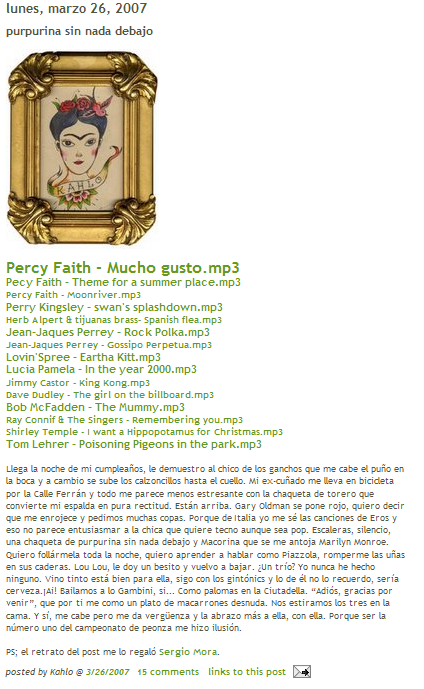There is a new version of libSpiff, the XSPF library, with support for relative paths using the xml:base attribute. Up until now relative paths have never worked in playlists as far as I know, so whereas in an HTML document you could do…
<a href="my.mp3">my song</a>
In a playlist you always had to spell it out, like:
<a href="http://example.com/my.mp3">my song</a>
The long-term story here is about the maturation of playlists as an internet media type. They have rarely gotten enough respect to be implemented well, according to the same high standards as other media types, and as a result they could rarely be shared across different systems. Any application that did bother to support relative paths in M3U had to guess at how that should work, so no two apps would support it the same way and a different M3U file would have to be created for each app. That’s like having one kind of HTML for Internet Explorer and another for Firefox, which is how we did do things in the bad old days before internet developers aggressively moved to web standards.
A plug for libSpiff: it has this kind of sophistication in many other ways as well. Unlike most playlist implementations it does a stellar job with the little details (like character sets outside of US-ASCII) that tell a user whether or not to trust your software. If you’re making an app that uses playlists, you can have that quality level just by using libSpiff.
I know that many developers consider playlisting too trivial to even have this kind of detail. But then again, most app developers don’t do a competitive job on playlist support. Playlists are one of the three atomic multimedia types, along with audio and video. Considering playlists less important is like giving red and green more respect than blue: Light blue and dark blue are finicky colors. Sky blue is pretty much all you need.
Relative paths are a baseline part of the web. If playlists are web documents, they need to support relative paths. This release of libSpiff makes it so.
foo_xspf is a plugin for the foobar2000 audio software that adds XSPF support. XSPF is an open, XML based playlist format developed by the Xiph.Org Foundation. It uses the open library libspiff to parse the files.
